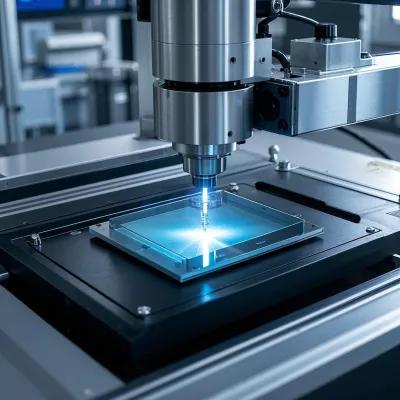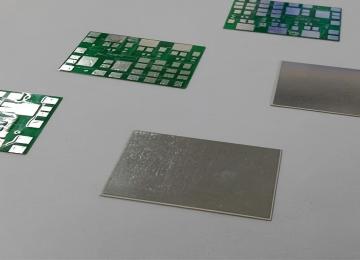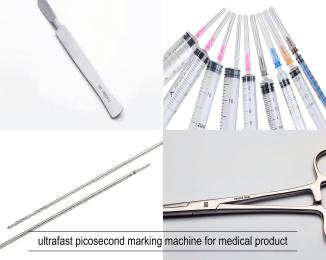
News
How Fiber Lasers Reshape Production Standards for Implantable Devices
【Industry Insight】 The global medical sensor market size is expected to exceed $32 billion in 2024, with implantable sensors accounting for 18% of the total. Facing increasingly stringent ISO 13485 certification requirements, manufacturers urgently need more advanced processing technologies. Fiber lasers, with their unique advantages, have become the key solution to industry pain points.
I. Medical-grade application characteristics of fiber lasers
1. Multi-material compatibility Capable of processing a variety of materials including titanium alloys, stainless steel, ceramics, and polymers, meeting the needs of different implantation scenarios. In the manufacturing of neural stimulator electrodes, fiber laser micro-processing technology improves the impedance consistency of platinum-iridium alloy electrodes to ±5%.
2. Sterile processing environment By integrating a purification system, the processing can maintain ISO Class 5 cleanliness, avoiding particle contamination from traditional mechanical processing. After adopting this technology, a cochlear implant manufacturer saw a 67% reduction in postoperative infection rates.
3. Traceable production Each device is equipped with an independent processing log system, achieving full-process data traceability from design parameters to finished products, complying with FDA 21 CFR Part 11 electronic record requirements.
II. Key manufacturing process innovations
1. Laser surface structuring technology Preparing biomimetic micro-grooves on the surface of artificial joint sensors can increase cell adhesion by 40%, promoting bone integration. Clinical data show that the 5-year retention rate of implants using this technology is 98.7%.
2. Three-dimensional micro-channel manufacturing Achieving micro-channel processing at any angle through galvanometer scanning and dynamic focusing. In a dialysate flow sensor, a spiral-shaped flow channel with a diameter of 30μm was successfully manufactured, with a detection accuracy of ±0.5ml/min.
3. Laser welding sealing technology Using coaxial gas protection welding, seamless welding of 0.1mm thin-walled metal tubes can be achieved, with a leak rate below 1×10^-9 mbar・L/s, meeting the IP69K protection level requirements.
III. Cost-effectiveness analysis Production data from a multinational medical device company show:
Fiber laser processing efficiency is 3-5 times that of traditional processes
Material utilization rate increased from 60% to 85%
Equipment maintenance costs reduced by 60%
Overall production costs decreased by 42%
IV. New directions in technology development
1. Ultrafast fiber laser technology Femtosecond lasers (10^-15 seconds) have achieved nanoscale processing, capable of etching 50nm wide nanopores in DNA sequencing chips.
2. Multi-beam collaborative processing Through beam splitting technology, a single device can simultaneously control 8 processing heads, increasing production efficiency by 8 times.
3. Adaptive processing system A closed-loop control system based on machine vision, which compensates for material thermal deformation errors in real-time, maintaining processing accuracy at ±2μm.
【Case Sharing】 In 2024, a domestic medical device manufacturer successfully developed the world's first degradable cardiovascular stent sensor using fiber laser micro-processing technology. The product utilizes laser-induced bioactive coatings to achieve dual functions of drug release and physiological parameter monitoring. Clinical experiments show that the restenosis rate is reduced by 53% compared to traditional products.
【Future Outlook】 With the integration of 5G and AI technologies, fiber lasers will develop towards intelligence and networking. By 2030, fiber laser-based medical manufacturing technology is expected to support the production of over 50% of implantable sensors worldwide, providing a solid technological foundation for personalized medicine.

-
 Nov 14, 2025
Nov 14, 2025How to choose a glass substrate laser drilling machine? Analysis of three core elements.
-
 Nov 13, 2025
Nov 13, 2025How to Avoid Cracks and Improve Efficiency on Ceramics by Laser Cutting?
-
 Nov 12, 2025
Nov 12, 2025How Does an Ultraviolet Picosecond Laser Marking Machine Break Through Precision Processing Bottlenecks?
-
What are the precautions for operating a laser marking machine?
1. It is strictly prohibited to start the laser power supply and Q-switching power supply when there is no water or the water circulation is abnormal.
2. The Q power supply is not allowed to operate without load (i.e., the output terminal of the Q power supply should be left floating).
3. In case of any abnormal phenomenon, first turn off the galvanometer switch and the key switch, and then conduct a check.
4. It is not allowed to start other components before the krypton lamp is lit to prevent high voltage from entering and damaging the components.
5. Pay attention to leaving the output terminal (anode) of the laser power supply suspended to prevent sparking and breakdown with other electrical appliances.
6. Keep the internal circulating water clean. Regularly clean the water tank and replace it with clean deionized water or pure water.
-
What should we do when laser intensity decreases and the marking is not clear enough?
1. Turn off the machine and check if the laser resonant cavity has changed; Fine-tune the resonant cavity lens. Make the output light spot the best;
2. The acousto-optic crystal is offset or the output energy of the acousto-optic power supply is too low;
Adjust the position of the audio-visual crystal or increase the working current of the audio-visual power supply;
3. The laser entering the galvanometer deviates from the center: Adjust the laser;
4. If the current is adjusted to around 20A but the light sensitivity is still insufficient: the krypton lamp is aging. Replace it with a new one.
-
How to maintain a UV laser cutting machine?
1. It is required to carry out regular cleaning every day, remove debris from the countertop, limiters and guide rails, and spray lubricating oil on the guide rails
2. The waste materials in the collection box should be cleared regularly to prevent excessive waste from blocking the exhaust port.
3. Clean the chiller once every 15 days, drain all the internal water, and then fill it with fresh pure water.
4. The reflector and focusing lens should be wiped with a special cleaning solution every 6 to 8 hours.
When wiping, use a cotton swab or cotton swab dipped in the cleaning solution to wipe from the center to the edge of the focusing lens in a counterclockwise direction.
At the same time, be careful not to scratch the lens.
5. The indoor environment can affect the lifespan of the machine, especially in damp and dusty conditions.
A damp environment is prone to causing rust on the reflective lenses and also easily leading to short circuits, discharge and sparking of the velvet laser.
-
What accidents might be caused by the laser emission when using a laser cutting machine?
(1) A fire was caused by the laser coming into contact with flammable materials.
Everyone knows that the power of laser generators is very high, especially when it comes to high-power laser cutting machines, the temperature of the emitted laser is extremely high. The possibility of a fire being caused when a laser beam comes into contact with flammable objects is very high.
(2) Harmful gases may be produced when the machine is in operation.
For instance, when cutting with oxygen, it undergoes a chemical reaction with the cutting material, generating unknown chemical substances or fine particles and other impurities. After being absorbed by the human body, it may cause allergic reactions or discomfort in the lungs and other respiratory tracts. Protective measures should be taken when conducting work.
(3) Direct laser exposure to the human body can be harmful.
The damage caused by lasers to the human body mainly includes damage to the eyes and skin. Among the harms caused by lasers, the damage to the eyes is the most severe. Moreover, damage to the eyes is permanent. So when doing homework, you must pay attention to protecting your eyes.
-
What is the focused spot diameter of nanosecond, picosecond and femtosecond laser?
Nanosecond: The light spot is 0.5-1mm.
Picosecond: The focused spot is around 0.02mm.
Femtosecond: Under the action of a laser beam with a high repetition rate of 100-200KHz and a very short pulse width of 10ps,
the focused spot diameter is as small as 0.003mm.
-
What are the main applications of UV laser cutting machine?
The UV laser cutting machine can be used for cutting and depaneling PCB.
It can precisely cut and shape various types of PCB circuit boards with V-CUT and stamp holes, and open Windows and covers.
It can also be used for separating packaged circuit boards and ordinary smooth boards.
It is suitable for cutting various types of PCB substrates, such as ceramic substrates, rigid-flex boards, FR4, PCBs, FPCs, fingerprint recognition modules, cover films, composite materials, copper substrates, aluminum substrates, etc.
-
Precautions for laser cutting machines to process various metal materials?
Copper and brass:
Both materials have high reflectivity and excellent thermal conductivity.
Brass with a thickness of less than 1mm can be processed by nitrogen laser cutting.
Copper with a thickness of less than 2mm can be cut. The gas used for laser cutting processing must be oxygen.
Copper and brass can only be cut when a "reflective absorption" device is installed on the system. Otherwise, reflection will damage the optical components.
Synthetic materials:
Processable synthetic materials include: thermoplastics, thermosetting materials and artificial rubber.
Aluminum:
Despite its high reflectivity and thermal conductivity, aluminum materials with a thickness of less than 6mm can be cut, depending on the type of alloy and the capacity of the laser.
When cutting with oxygen, the cutting surface is rough and hard.
When nitrogen is used, the cutting surface is smooth.
Pure aluminum is extremely difficult to cut due to its high purity.
Only when a "reflection and absorption" device is installed on the fiber laser cutting machine system can aluminum materials be cut.
Otherwise, reflection will damage the optical components
-
What should be paid attention to when laser cutting stainless steel?
Laser cutting processing of stainless steel requires the use of oxygen, under the condition that edge oxidation is not a concern.
If nitrogen is used to achieve an edge free of oxidation and burrs, no further processing is required.
Coating an oil film on the surface of the sheet will achieve a better perforation effect without reducing the processing quality.



